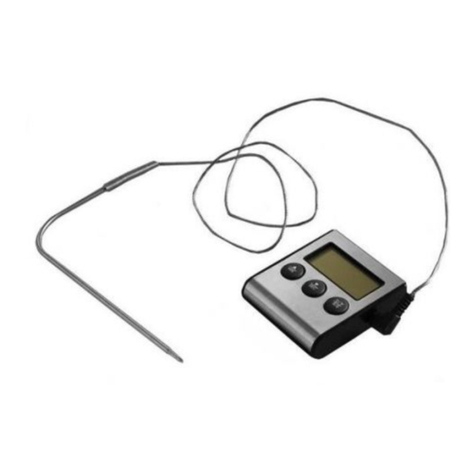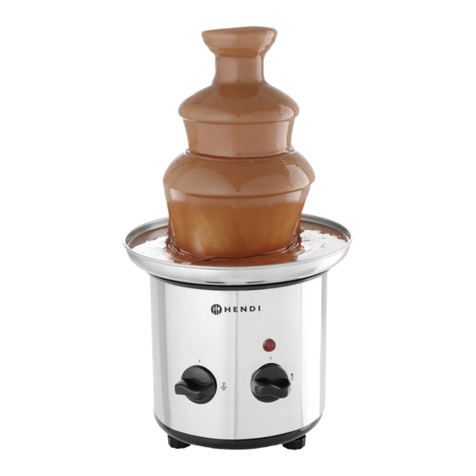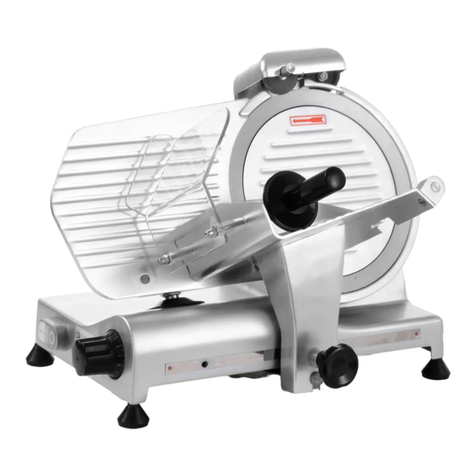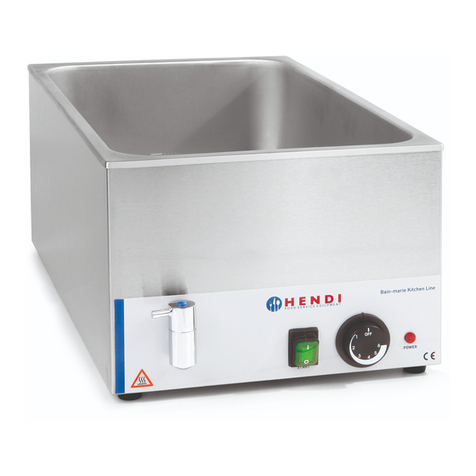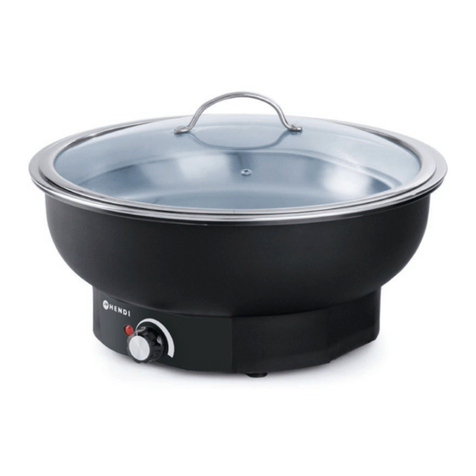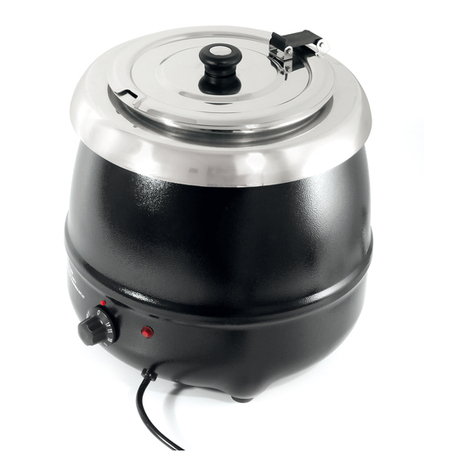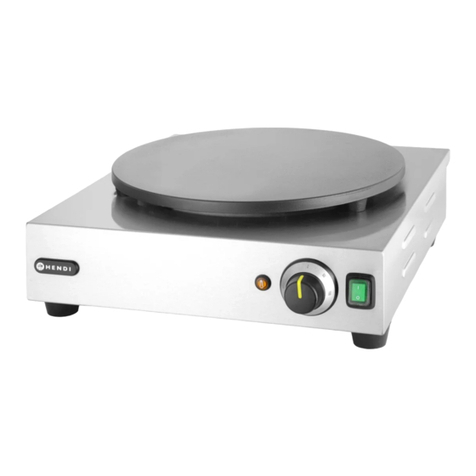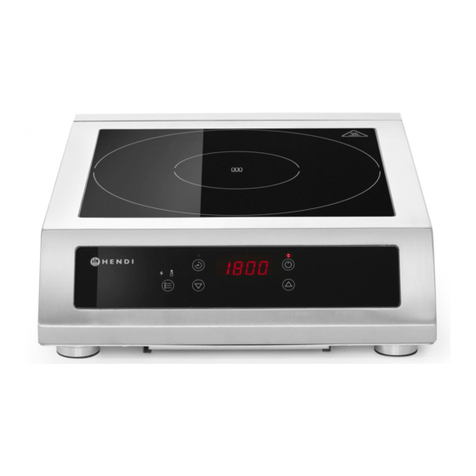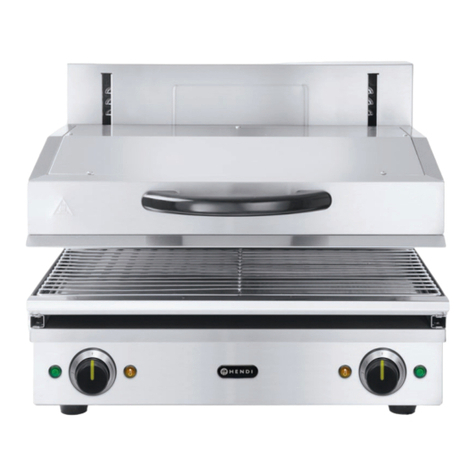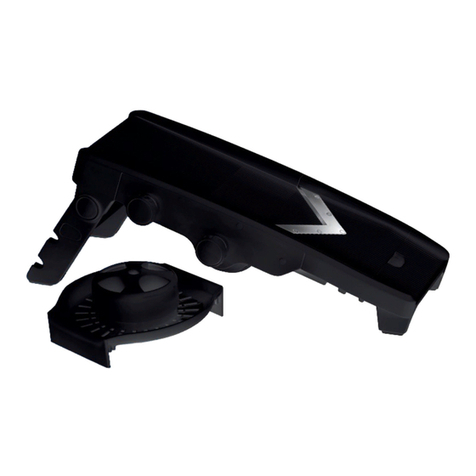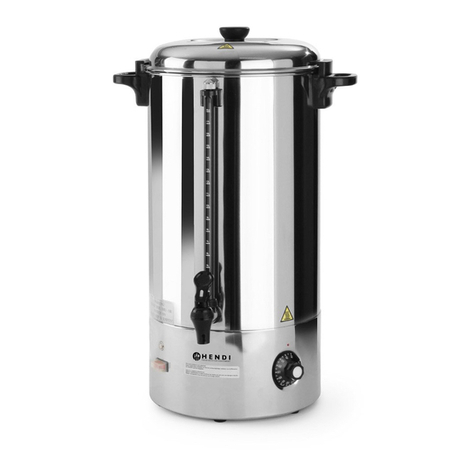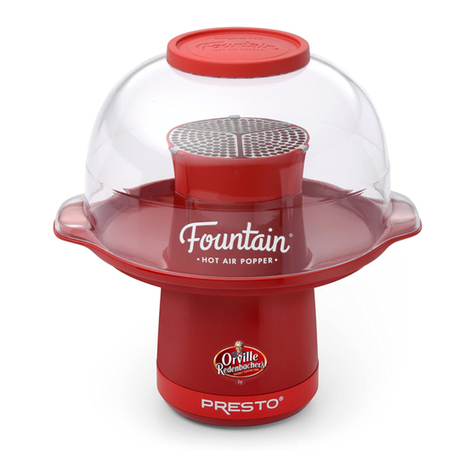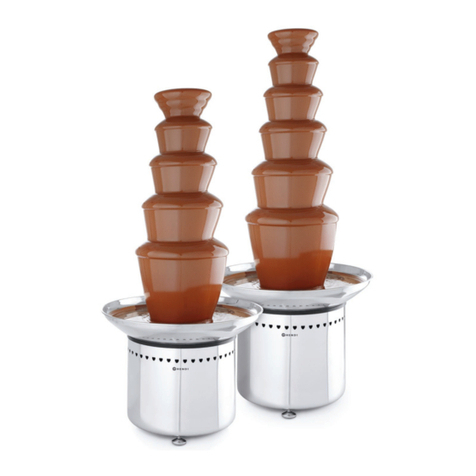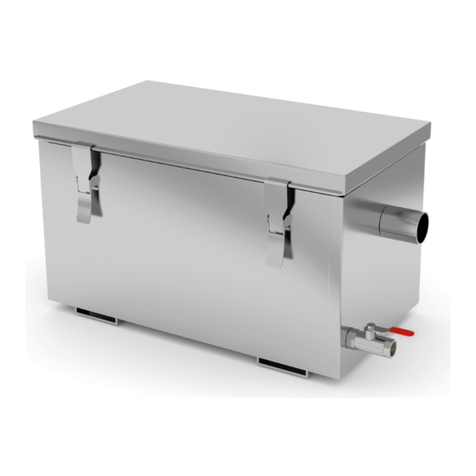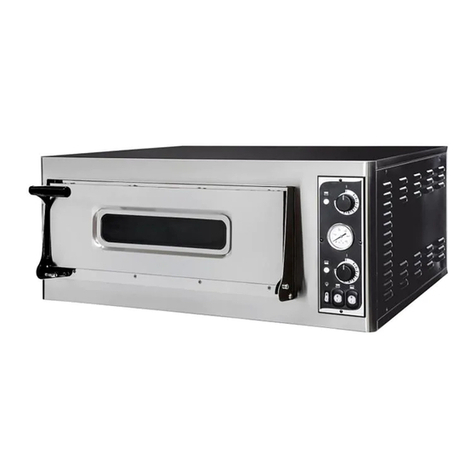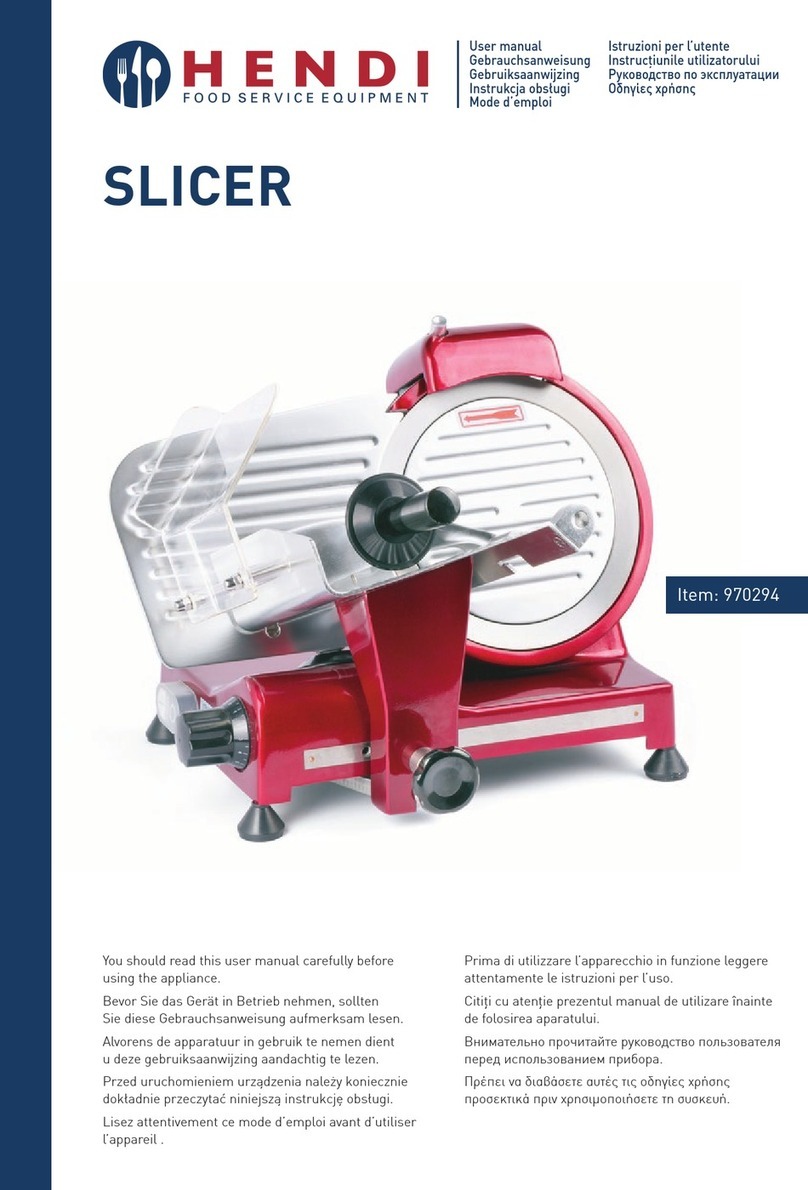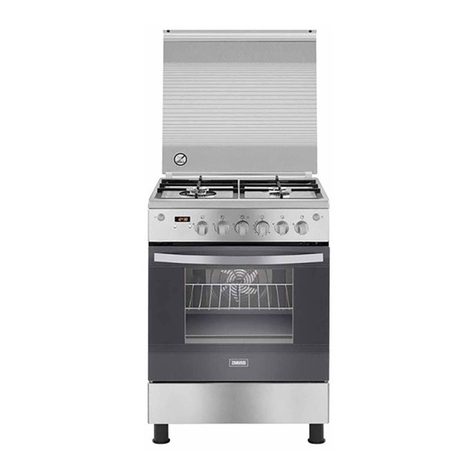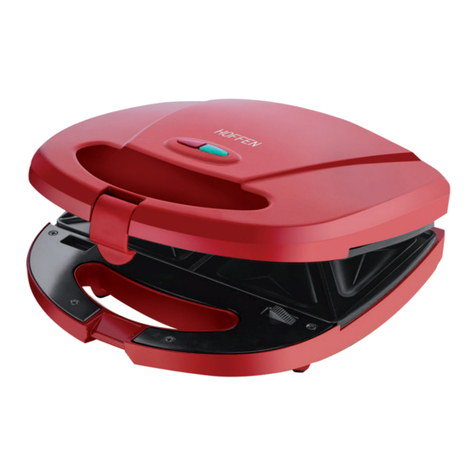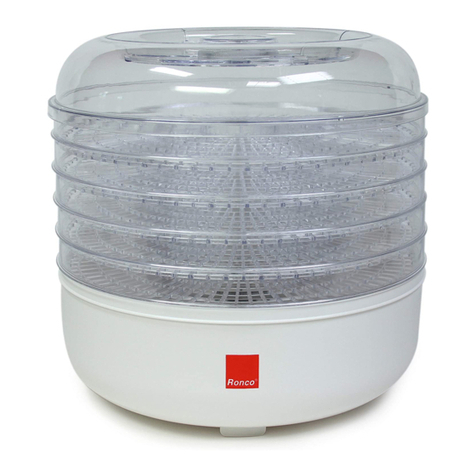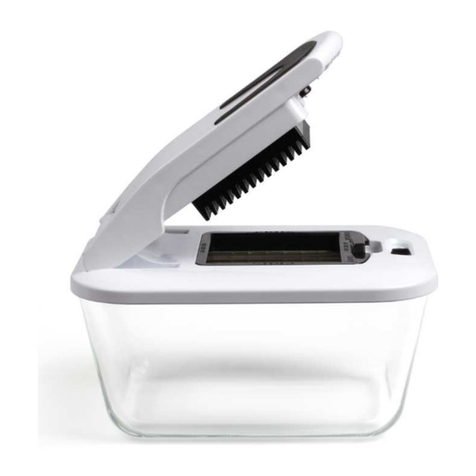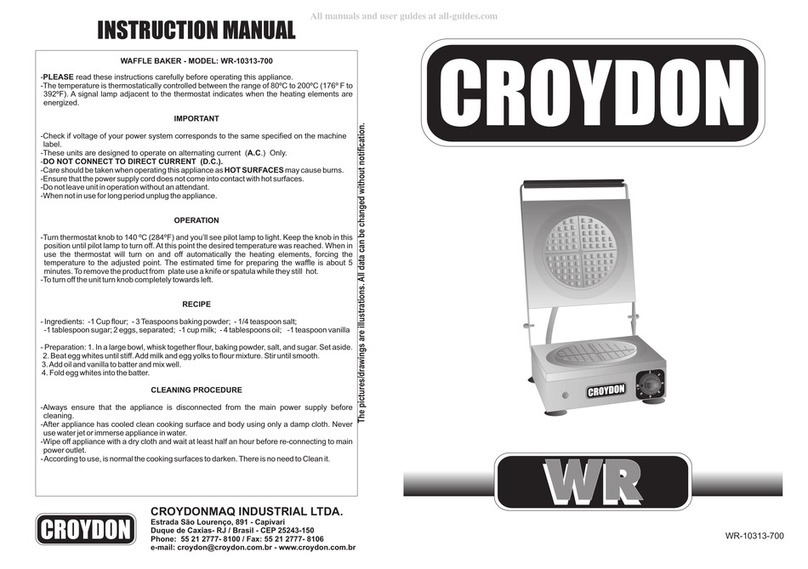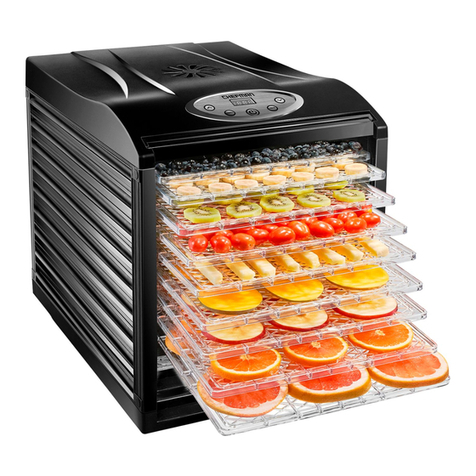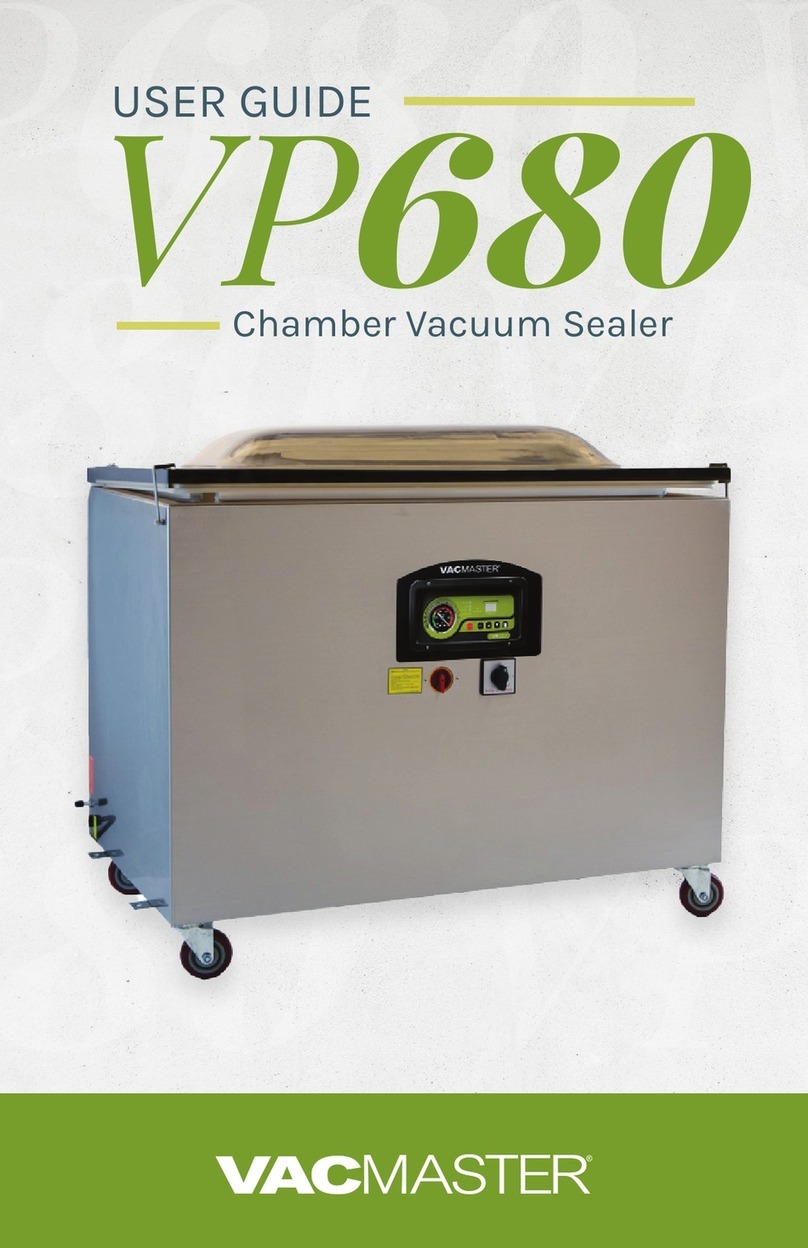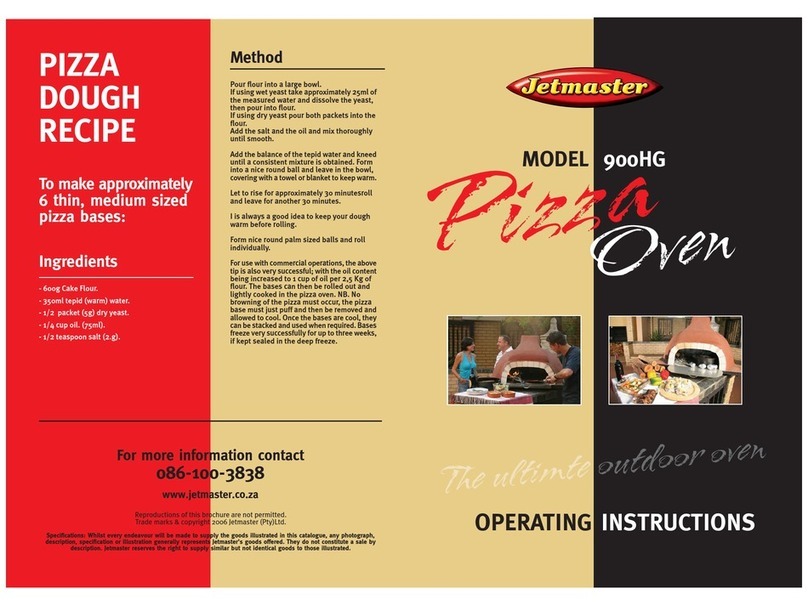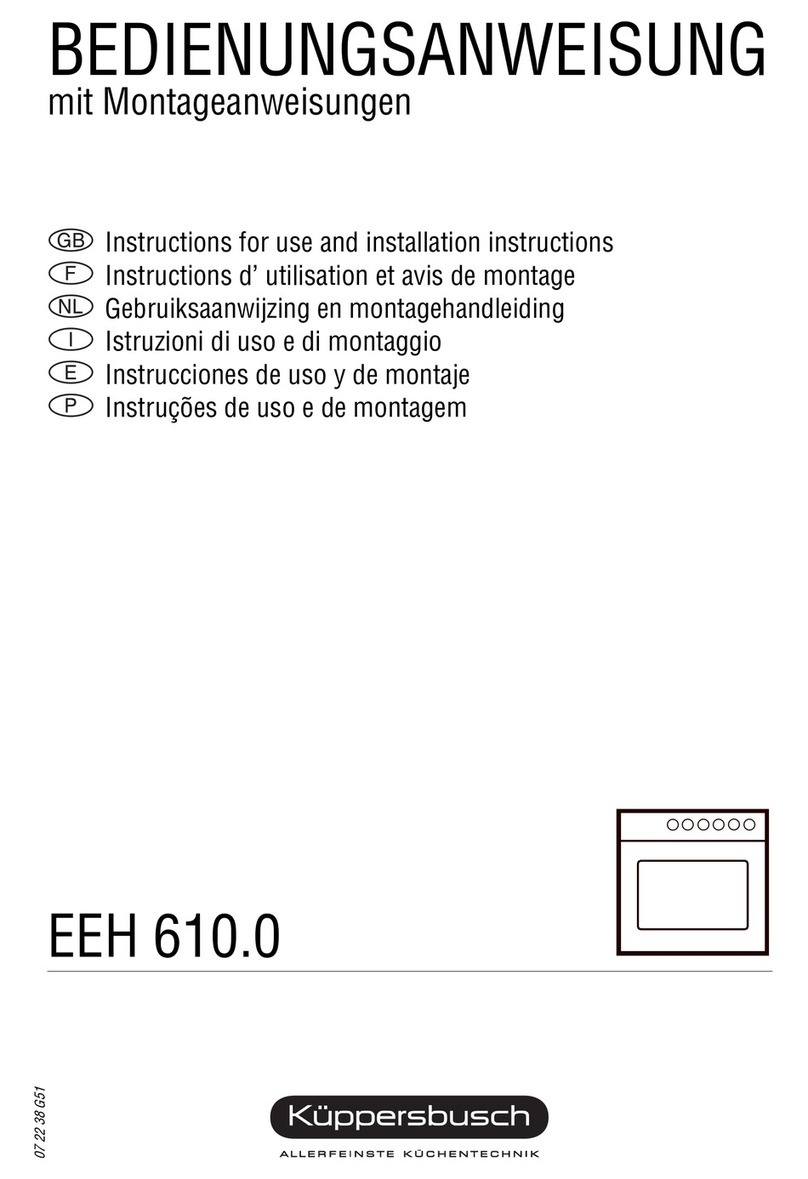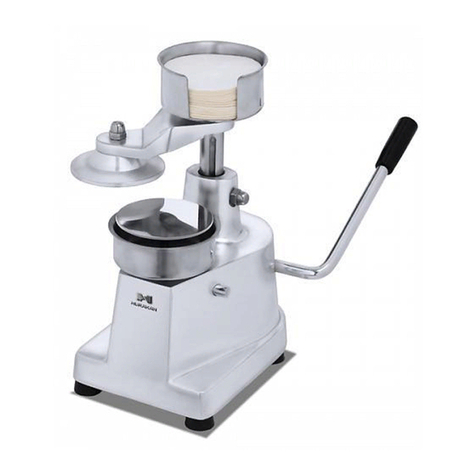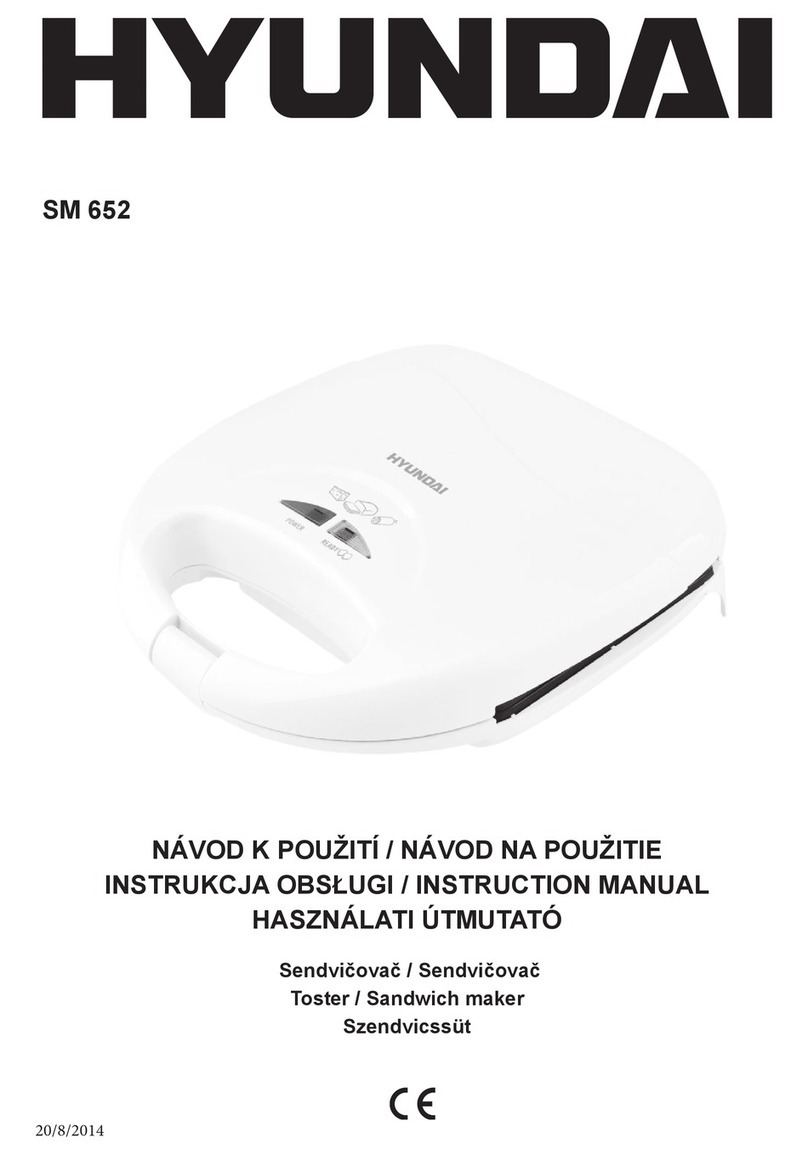7
EN
CHAPTER 4. USE
Before every working-cycle always make sure that the equipment is perfectly cleaned, in particular those
surfaces that get in touch with the dough. If necessary clean the equipment as indicated in the following
chapter.
TO START
Push the button in position1; the equipment starts
the two rollers and it is now ready to be used.
Before introducing the dough previously left to rise
(at least 6 to 8 hours) open the rollers using the han-
dle (in position 3-4).The dough needs to be floured
and squashed slightly to get through the rollers.
When the dough comes out it will be in an oval shape
and you will notice reduction of thickness. Towards
the end of this step, you need to support with your
hand the dough until it come out completely. At this
stage rotate the dough in a transversal way of about
90° and put it trough the rollers once more (in posi-
tion 1-2). You will finally get an almost perfect disk
shape dough that can be easily enhanced with few
finishing touches by hand.
TO STOP
Press the button (0).
4.2 Usage for the shaping of the disks
After turning on the machine with the toggle switch
in position 1 or 2, and starting the movement of roll-
ers with the foot pedal, you can start working.
Before introducing in opening of the highest cover the
small ball of dough previously left to rise (at least 6 to
8 hours), squash the sides slightly so it can easily go
through the highest rollers When the dough comes
out, you will see a reduction of thickness , with an
oval sAt the end of the trial, support on exit the dough
with your hand letting it advance slowly till it comes
out, at the end of this the rollers must be stopped.
Turn the dough to 90° placing it in the lowest rollers
ready for the next trial. Out of these rollers it will have
a disk shape,this shape is not perfect so it needs the
finishing touches by hand.
4.3 Usage for the shaping of rectangles
Position a baking pan under the machine clean and
big enough to fit underneath.
Turn on the machine ,start rollers, then introduce in
the opening of the highest cover the small ball of
dough previously left to rise (at least 6 to 8 hours),
squash sides slightly to facilitate entrance in the roll-
ers through which , on the first trial the dough be-
comes thinner.
At the end of trial, it is necessary for medium or big
weights to proceed as follows: go forward step by
step , for another constant manual widening of the
dough , positioning for the next trial trough the roll-
ers , from here the shaped dough will fall down into
the baking pan.
IMPORTANT
Turn off the machine when you have finished working.
4.1 Use of the equipment

